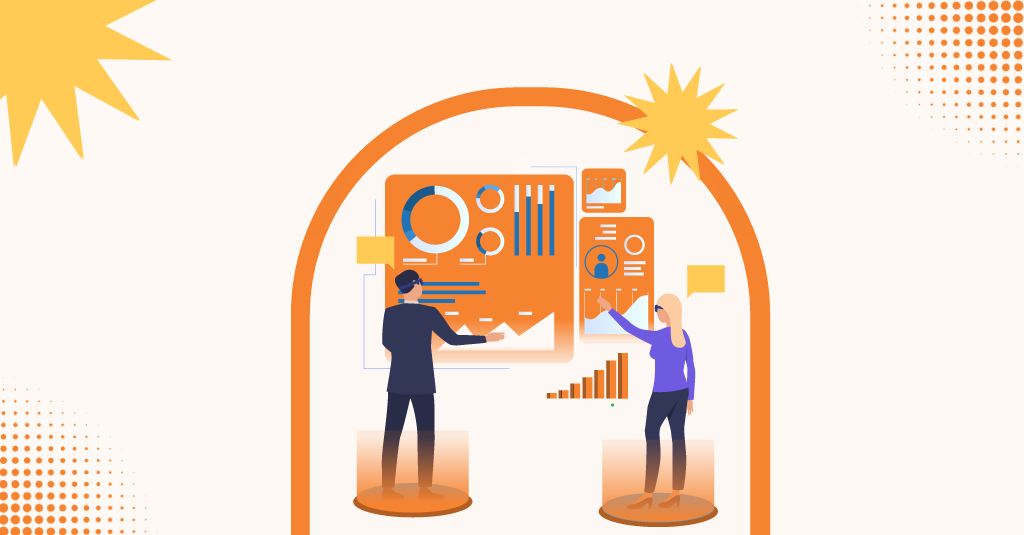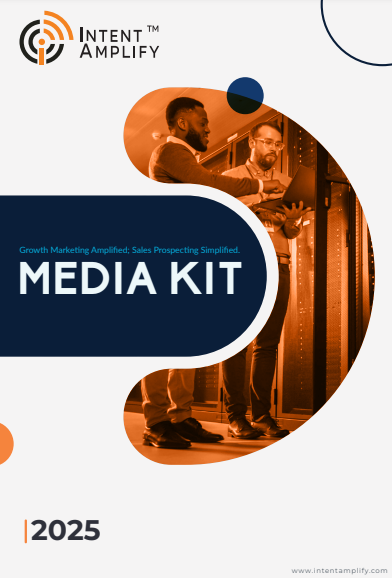
What Is Sales Prospecting: 7 Proven Strategies That Convert
- Last updated on: July 21, 2025
Instead of picking up the phone for a cold call or filtering through an inbox filled with spam, it’s 2025, and your buyer is doing their homework. They’re likely reading comparison blogs, reviewing pricing pages, downloading whitepapers, or perhaps they’re even lurking on your LinkedIn page. By the time they reach out to a rep, likely, a preference has already formed (whether they know it or not). In today’s environment, sales prospecting is no longer about “volume.” Rather, it’s about accuracy.
It’s no longer as simple as blasting every contact with a/all job titles that match your ideal customer profile with an email. Prospecting now means understanding intent signals, personalizing outreach at scale, plus utilizing AI and automation tools to identify buyers that have a high probability before your competitors even know they’re an opportunity.
If you’re still practicing prospecting like this, is it a numbers game? You’re already behind.
This guide outlines 7 prospecting strategies that work everything from how to leverage buyer intent and AI in order to humanize outreach (not sound like you’re a bot). Working in sales? Whether you’re an SDR, AE, or sales leader,r are going to give you actionable takeaways to convert in a crowded B2B market today.
What Is Sales Prospecting?
Ultimately, sales prospecting is about identifying, learning about, and reaching out to potential buyers who are most likely to become paying customers. It’s the flame to spark every sales pipeline, and in today’s busy marketplace, it’s arguably the most important aspect of your go-to-market strategy.
However, sales prospecting isn’t just calling cold or checking off a list of people to cold email. In 2025, it’s data-informed, tech-enabled, and deeply humanized. The best prospecting today happens with the use of AI tools, behavioral intent signals, firmographic information, and smart, personalized paths aligned with where the buyer is in their journey.
Prospecting vs. Lead Generation: A Quick Clarifier
While these two terms are often used interchangeably, lead generation is far broader it includes content marketing, search engine optimization (SEO), paid ads, and everything that gets people into your funnel. Prospecting is outbound and proactive. This is when the sales team reaches out to people who haven’t necessarily raised their hands.
Gartner outlines how AI, buyer intent data, and personalization drive B2B sales engagement.
So, why is prospecting important for your attention now more than ever?
B2B Buyers Have Evolved And Continue To Do So
According to Gartner, the average buyer spends 17% of their time meeting suppliers, and the rest they spend learning online, consulting others, and developing internal buy-in.
If your prospecting is dumb, and you don’t show up when the buyer is early, with insight, you simply don’t matter.
Not only that, if your prospecting is dumb, and you are using out-of-date technology scripts, or generic outreach, or irrelevant offers, you are aggravating the buyer.
So, Why Do You Need Smarter Sales Prospecting?
– Attention spans are shorter, and you have less than 10 seconds for interest to be captured.
– As per Gartner, More decision makers are involved in the average B2B deal; there are 6 to 10 stakeholders.
– Buyers are inundated – your buyers are inundated with decisions to make, and you need to be the unique decision to cut through the clutter and be relevant
Intelligent prospecting helps you address the execution gap between what buyers want (value, timing, relevance) and what sales needs (pipeline, qualified meetings, velocity). This is also where revenue starts, and often where it’s lost.
So how do you do it right?
Let’s dive into the first of 7 winning strategies.
Strategy #1 – Use Intent Data For Sales Prospecting with Intentionality
How would you feel about having a line of sight into which prospects are currently conducting research on your solution (before a reach-out)? That is the potential of intent data.
Intent data tracks digital behavior, or signals, like keyword searches, views of a case study, or product comparison. If a buyer is “in-market,” this signals a potential buyer. Instead of focusing on a wide audience base, you can hone in on a handful of highly-fit accounts that are already demonstrating buying behavior.
For example, one cybersecurity vendor noticed a spike in healthcare traffic to their compliance resources. By adjusting the messaging around HIPAA and patient data protection, they changed their approach and increased qualified meetings by 40% in just over a month.
Strategy #2 – Segment Smartly to Personalize at Scale
Prospecting is not about quantity; it’s about quality. And smart segmentation is how you achieve quality. In 2025, segmentation is more advanced than just filters like ” industry” or “job title.” The best sales organizations today use firmographic, technographic, and behavioral data to create micro-targeted segments that are personal (or feel that way) while still scalable.
Example: A SaaS organization selling collaboration tools segmented their outreach not only by company size but also by companies that recently upgraded their technology stack (such as moving to Microsoft 365). Their personalized communication was specific to the upgrade: “We noticed your team recently upgraded to 365. Here’s how our tool helps adoption.” This more specific proposal generated three times the response rates as generic outreach.
When it comes to customer segmentation, be smarter:
- Firmographics – company growth stage, geography, revenue, industry
- Technographics – tools and platforms the company uses
- Behavioural triggers – how the leads interacted with the website, evaluation demo, going to a prospective customer’s event…
- Role-Based Needs – what keeps a CTO up at night vs what keeps an HR director up at night.
Top CRMs like Hubspot, Salesforce, and platforms like ClearBit or Leadspace help you create live segments that auto-update as your buyers’ behaviours change.
The result? According to McKinsey, B2B businesses that are using advanced segmentation and personalization are seeing 5 – 8x higher ROI on top of outreach.
When every email, call, or InMail sounds like it was written just for them, they will listen and engage. Segmentation doesn’t just power personalization, it breathes life into it, making each interaction feel genuinely human.
Strategy #3 – Use AI to Write Attractive Outreach
In 2025, generic outreach is dead. Prospects can smell an email that is template-based email from a mile away, and they delete it just as fast. Enter AI empowered personalized outreach.
Sales teams today are using tools like Lavender, Regie.ai, and Outreach to instantly generate contextually relevant, hyper-personalized outreach messages that resonate. These tools pull in insight from LinkedIn, news about the company, your CRM, and even what tone you’d like to use to generate subject lines and copy that feels as though they were just for that person.
For example, if a rep wants to reach a CMO, they can auto-generate an email recognizing the prospect’s latest press release, and write their product as a solution to a pain point they just publicly declared.
And it works! Outreach.io has reported that AI-powered personalized emails have an open rate of up to 67% greater than manual attempts.
The big takeaway? AI doesn’t take your voice away; it enhances it. You still write the story. AI just makes sure that people read it.
Strategy #4 – Use a Multichannel Approach in Sales Prospecting
Relying on one single channel, whether it be email or LinkedIn, is akin to fishing with one pole in an ocean. In the year 2025, prospecting effectively will require you to adopt a multichannel approach that focuses on where buyers “live.”
Why? Because modern B2B buyers bounce between inboxes, social feeds, webinars, podcasts, and Slack groups. You can’t predict where your message will stick, but you can increase the odds by just showing up across channels in a cohesive and coordinated way.
HubSpot’s State of Inbound Report 2024 confirms multichannel buyer behavior and content consumption patterns across platforms.
A sample multichannel sequence might look like the following:
- Day 1: LinkedIn profile view + connection request
- Day 2: Personalized email that references mutual connections / recent activity
- Day 5: Voicemail drop or cold call
- Day 7: Comment on LinkedIn post
- Day 9: Follow-up email with case study or value nugget
https://www.salesloft.com/resourcesSalesloft, and HubSpot Sequences can help seamlessly coordinate all of these touchpoints.
The key is consistency, not annoying sellers. Each interaction should feel relevant, timely, and provide respect for the buyer’s space.
Sellers who used four or more coordinated channels in their prospecting strategy have seen 300% increases in engagement compared to single-channel selling.
Bottom line: the more channels, the more ways you can engage a response.
Strategy #5 – Make LinkedIn a Sales Prospecting Gold Mine
LinkedIn in 2025 is not a resume dumpster. It is the most powerful prospecting tool you have. With more than 1billionn professionals and some very advanced filters, LinkedIn is where B2B decision-makers hang out, share ideas, and vet vendors.
So, here’s the catch: Don’t sell! Just show up.
You can create visibility for your name by writing posts and thought leadership, commenting on your ICP’s posts, and engaging in discussions. The more frequently you do this, the more familiar your name becomes, so when you reach out, you are not a stranger.
Plus, going “all in” and being active on LinkedIn is completely free.
You all have access to LinkedIn Sales Navigator. This allows you to:
- Create hyper-focused lead lists
- Receive alerts on changes, growth, or buyer intent triggers
- Identify mutual connections and/or interests for great warm introductions
Example: A sales rep noticed a prospect had just been promoted. She was brief and direct, reaching out with, “Congrats on the new role, curious if X is in your new priorities?” That triggers instant engagement and confirms a discussion within hours.
Step it one further with voice notes and video DMs. They cut through the noise.
If done right (I mean, it’s all about social proof), LinkedIn serves as an effective prospecting medium, but more importantly, it will establish a warmer lead before the meeting even begins.
Strategy #6 – Use Trigger Events to Time Your Outreach Perfectly
In prospecting, it’s not just about good timing; timing is the whole game.
Trigger-based outreach means reaching out when the prospect’s context has changed for the better. Trigger events create opportunity windows where buyers are more receptive to conversations and change.
Strong trigger events include things like:
- A company just raised money
- A new decision maker came on board
- They launched a new product or opened a new market
- Regulatory changes impacted their sector
- They are hiring roles that indicate growth or transformation
This is where tools like SalesIntel, Leadfeeder, and Google Alerts enter the picture. They tell you when something is different inside a target account (so your outreach is perceived as informed rather than intrusive).
Say a company announces that they are expanding into Europe. A smart rep might write:
“Congrats on your move into the EU- we are anticipating that many of our clients found data compliance a significant hurdle during that move. Would you like to learn how we helped them stay audit-ready without slowing go-to-market”?
You acknowledged something list-worthy and also provided immediate relevance.
Prospecting is not about how many emails you can send in one day = 100. It’s about how many you can send at the right time – 10 – and trigger events that make them.
Strategy #7 – Infuse your AI with your Human Touch
AI has transformed prospecting from a target to hitting the bullseye but tech alone won’t deliver the win. The best combination? AI for scale, humans for empathy.
Modern sales teams leverage AI to:
- Research accounts and enrich contacts’ data.
- Score leads based on intent, fit, and engagement.
- Draft outreach emails relevant to the buyer persona.
- Forecast when a prospect is likely to respond.
Platforms like Outreach.io, Apoll,o and ChatGPT for Sales can now even evaluate buying signals and generate personalized outreach automatically and at scale. You can even auto-generate a LinkedIn message or email to a prospect that mentions a webinar they recently attended or summarizes their company’s blog to hook into your pitch.
According to McKinsey, AI-enhanced sales reps generate 50% more leads and report up to 60% shorter sales cycles compared to traditional outbound methods.
But the best part is, you still need to be human.
AI can analyze the “why” and “when,” but YOU are the “how.” Real tone. Real curiosity. Emotional intelligence. The only things a bot cannot fake.
Example: An AI can indicate that a prospect has a 78% win probability based on their tech stack and interaction, but only a human can say, What’s holding you back from doing anything with this now?” and listen.
So don’t fear AI, use it as your prospecting co-pilot and let your human side close the deal.
Recommended: Mastering B2B Sales Prospecting Best Practices for Success
Conclusion
When it comes to sales prospecting in 2025, remember it is not about quantity. It is about quality, precision, personalization, and timing. Whether you use AI, intent data, or lists that contain a fair amount of customer segmentation, you will be able to make your outreach feel personalized to many. However, keep in mind that tools just augment your strategy. The highest reward comes when intelligent technology converges with our human relationships.
When you are finding warm leads from intent signals, using triggers to plan your outreach timing, or sending personalized outreach, you are not just filling the pipeline. You are building trust.
In the new sales landscape, your superpower is relevance.
FAQs
Q1. What does sales prospecting mean in B2B?
Sales prospecting is the activity of sourcing and reaching out to potential business customers (prospects) who are likely to convert into paying customers. Prospecting is the first important step of the sales funnel.
Q2. Which prospecting platforms will give sales teams a winning edge in 2025?
Best tools are 6sense for intent data, Apollo.io for outreach automation, ZoomInfo for lead enrichment, and SalesIntel for real-time trigger alerts and firmographics.
Q3. How has AI changed sales prospecting?
AI allows reps to research faster, personalize at scale, level of lead scoring accuracy, and predict the best time to be in contact, which provides more time to prospect and increase conversions.
Q4. How do a lead and a prospect differ in the context of modern B2B sales workflows?
A lead is a potential contact that may or may not be a fit., A prospect has made it to some level of qualification to show a higher likelihood of becoming a customer.
Q5. How many prospects should a sales rep reach out to each day?
Ultimately, quality is better than quantity. Reps employing targeted and data-led outreach often realize a better result by connecting with 20-40 well-researched prospects each day.




